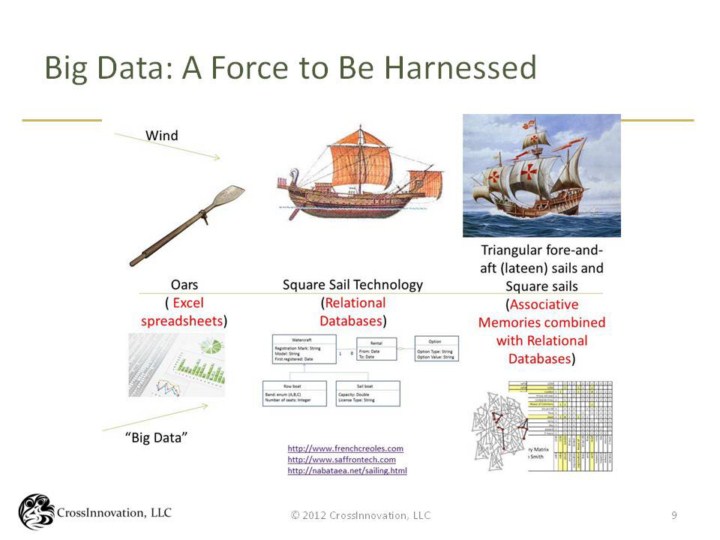| front |1 |2 |3 |4 |5 |6 |7 |8 |9 |10 |11 |12 |13 |14 |15 |16 |17 |18 |19 |20 |21 |22 |23 |24 |review |
 |
Christopher Columbus in 1492 didn’t just sail the ocean blue. He launched an ecological revolution. The same Vint Cerf, the recognized intellectual father of the Internet, started a knowledge revolution including its impact through social media.
Until 200 years ago, because the amount of knowledge was limited, the analysis and synthesis of it was straightforward and accomplished without much use of tools. Now that the amount of knowledge is many orders of magnitude larger than what we can assimilate, memorize and process, it becomes a requirement for effective decision making to use tools in order to select relevant information, and tools to help analyze and synthesizing the information.
When people were using oars, they were at the mercy of the wind. Square sail technology appeared around 1200 B.C. It was very good for downwind sailing, acting similar to a parachute. Triangular fore-and-aft sails made their earliest appearance in 3 A.D. and essentially harvested the wind with the same principle as lift for airplanes. They improved upwind sailing ability and speed. Christopher Columbus combined technologies providing speed and maneuverability.
Today associative memories enable us to ingest data with no need to predefine the question we want to answer and use different reasoning methods to extract in real time relevant “actionable knowledge”. |